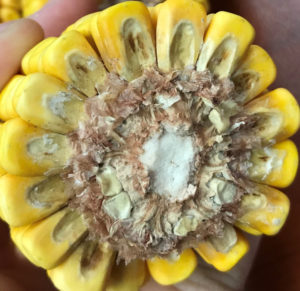Upcoming events:
Oct. 2: Beef Quality Assurance, 1:00 – 3:30 p.m., Fairgrounds in Geneva. RSVP brad.schick@unl.edu
Oct. 2: Beef Quality Assurance, 6:30 – 9 p.m., Dick’s Place, Lawrence. RSVP brad.schick@unl.edu
Oct. 3: Beef Quality Assurance, 1:00 – 3:30 p.m., Fairgrounds, Minden. RSVP brad.schick@unl.edu
Oct. 13-14: 4S Goat Expo, Lincoln Co. Fairgrounds, North Platte http://www.4sgoatexpo. com/
Oct. 15: Crop Science Investigation (CSI): Yield losses, 5-6 p.m., RSVP jrees2@unl.edu
Oct. 18: Emerald Ash Borer Seminar ($15), 6:30-8:30 p.m., Lancaster Co. Extension Office, Lincoln, RSVP: 402-441-7180, sbrowning2 @unl.edu
Oct. 22: Heuermann Lecture: “Stewards of Civil Discourse: Value and Impacts on Nebraska’s Future” featuring Senators Bob Kerry and Chuck Hagel, 3:30-5:00 p.m., Nebraska Innovation Campus, Lincoln, Livestream: https:// heuermannlectures.unl.edu
Oct. 23: Farm/Ranch Transition: When you’re not in control, 9 a.m.-4:30 p.m., Valentine,402-376-1850, jjenkins2@unl.edu
Oct. 24: Farm/Ranch Transition: When you’re not in control, 9 a.m.-4:30 p.m., Ainsworth, 402-387-2213, jstott3@unl.edu
Oct. 25: Farm/Ranch Transition: When you’re not in control, 9 a.m.-4:30 p.m., O’Neill, 402-336-2760, atimmerman2@unl.edu
Crop Update: In some ways it’s felt like a strange harvest season with how much of the area crop was harvested early due to storm damage and drought, but that’s also a blessing. It’s also been a blessing to have had surprisingly good test weights from some of the hail damaged corn and low mold damage reported thus far. There’s still a lot of harvest to go and I think stalk and ear rots are on the minds of us all.
 I’ve been seeing more ‘less common’ ear rots this year and starting to receive questions on them. These include Nigrospora ear/cob rot, Cladosporium rot, and Trichoderma rot. These are caused by weaker fungi feeding on ears of plants that were stressed or killed prematurely. So hybrids that had problems with anthracnose top dieback, top leaf death, root rot issues, shortened husks with exposed ear tips, and hail/wind damage may have more problems with these diseases. Symptoms include when the cob feels rotted or falls apart when you break an ear in half. With Nigrospora, the kernels often have black spores on them and the spores can also be noticed on the cob pith as well. With Cladosporium and Trichoderma, the spores appear more green in color. None of the fungi causing these diseases have a mycotoxin associated with them, which is good. The diseases can create lighter test-weight ears and can create more chaff and dust during harvest due to the cobs falling apart. In storage, the biggest problems would be the fines, broken cobs, and extra chaff; keeping the grain below 15% moisture will stop fungal growth.
I’ve been seeing more ‘less common’ ear rots this year and starting to receive questions on them. These include Nigrospora ear/cob rot, Cladosporium rot, and Trichoderma rot. These are caused by weaker fungi feeding on ears of plants that were stressed or killed prematurely. So hybrids that had problems with anthracnose top dieback, top leaf death, root rot issues, shortened husks with exposed ear tips, and hail/wind damage may have more problems with these diseases. Symptoms include when the cob feels rotted or falls apart when you break an ear in half. With Nigrospora, the kernels often have black spores on them and the spores can also be noticed on the cob pith as well. With Cladosporium and Trichoderma, the spores appear more green in color. None of the fungi causing these diseases have a mycotoxin associated with them, which is good. The diseases can create lighter test-weight ears and can create more chaff and dust during harvest due to the cobs falling apart. In storage, the biggest problems would be the fines, broken cobs, and extra chaff; keeping the grain below 15% moisture will stop fungal growth.
I’ve also had people asking for more specifics on conducting the pinch test to determine percent stalk rot in the field. Sometimes it’s easier to visualize this versus me keep writing about it. Thus, I created a very short video this week to hopefully help. One note is as you do this pinch test, the stalks may not completely crush, but a stalk with rot has a definite ‘give’ to it. You can view the video at: https://www.youtube.com/watch?v=7z75VN1c51Q.
For those who left hail-damaged soybean standing in fields with yields less than 5 bu/ac, some have asked about grazing those acres. For whole fields, we were recommending seeding a cereal into them (like rye at this point) just to offset the fat content of any remaining beans and provide some cover on the ground. That’s still a possibility for those interested in doing this. Some have also asked about grazing the soybean acres adjacent to seed corn residue without adding in a cover crop. That could be an option too and we don’t anticipate problems with that situation. When grazing seed corn or corn residue in any fields, it will be important to determine amount of ear loss on the ground prior to grazing. A way to do this is to measure off 100 feet and count the number of ears you find within that distance; do this 3 times throughout the field (for a total of 300 feet). Add the total number of ears found in 300 feet. Then, assuming each ear is about 0.5 bu, multiply the total number of ears by 0.5 to determine the average bushels on the ground in the field. Normal grazing management can be used if the total is 10 bu/ac or less on the ground. If more than that, different management needs to be considered and the following is a good resource for those considerations: https://go.unl.edu/8j4n.
For those asking about wheat varieties for Eastern Nebraska, the following resource may be of benefit to you at: https://cropwatch.unl.edu/2018/winter-wheat-varieties-eastern-nebraska-fit.
Also, Aaron Berger, Nebraska Extension Educator who conducts podcasts for the UNL Beef website, recently interviewed Chad Dane, a Clay County farmer. You can hear this podcast on “A Row Crop Farmer’s Perspective on Cover Crops and Cattle Grazing” at: http://s3-us-west-2.amazonaws.com/unlbeefwatch/2018/Sep_2018_Chad_Dane.mp3.



































